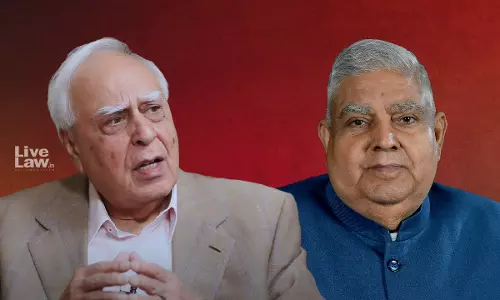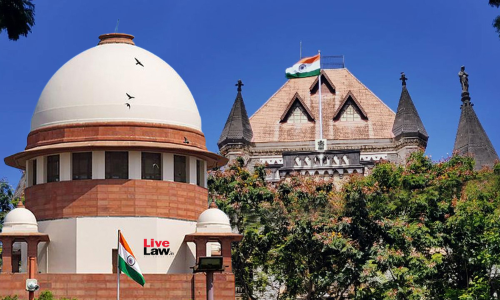![SC Asks UoI To Revisit National Mineral Policy [Read Judgment] SC Asks UoI To Revisit National Mineral Policy [Read Judgment]](https://www.livelaw.in/cms/wp-content/uploads/2017/08/cats.jpg)
The National Mineral Policy, 2008, seems to be only on paper and is not being enforced perhaps due to the involvement of very powerful vested interests or a failure of nerve, the bench said.In an important judgment, the Supreme Court has asked the Central government to revisit the National Mineral Policy, 2008, and announce a fresh and more effective, meaningful and implementable policy...
The National Mineral Policy, 2008, seems to be only on paper and is not being enforced perhaps due to the involvement of very powerful vested interests or a failure of nerve, the bench said.
In an important judgment, the Supreme Court has asked the Central government to revisit the National Mineral Policy, 2008, and announce a fresh and more effective, meaningful and implementable policy within the next few months before the end of this year.
In the judgment delivered in a petition filed by Common Cause through activist lawyer Prashant Bhushan, the court held that illegal or unlawful mining without forest clearance or environment clearance or without both would attract 100% compensation.
A bench comprising Justice Madan B Lokur and Justice Deepak Gupta observed: “The National Mineral Policy, 2008 (effective from March 2008), seems to be only on paper and is not being enforced perhaps due to the involvement of very powerful vested interests or a failure of nerve. We are of opinion that the National Mineral Policy, 2008, is almost a decade old and a variety of changes have taken place since then, including (unfortunately) the advent of rapacious mining in several parts of the country.”
Mining without EC/FC
With regard to issue of mining without an environment clearance or forest clearance or both, the court made these important summarizations:
- A mining project that commenced prior to January 27, 1994, and has obtained a No Objection Certificate from the SPCB prior to that date is permitted to continue its mining operations without obtaining an EC from the impact assessment agency. However, this is subject to any expansion (including an increase in the lease area) or modernisation activity after January 27, 1994, which would result in an increase in the pollution load. In that event, a prior EC is required. However, if the pollution load is not expected increase despite the proposed expansion (including an increase in the lease area) or modernisation activity, a certificate to this effect is absolutely necessary from the SPCB, which would be reviewed by the impact assessment agency.
- The renewal of a mining lease after January 27, 1994, will require an EC even if there is no expansion or modernisation activity or any increase in the pollution load.
- For considering the pollution load, the base year would be 1993-94, which is to say that if the annual production after January 27, 1994, exceeds the annual production of 1993-94, it would be treated as an expansion requiring an EC.
- There is no doubt that a new mining project after January 27, 1994, would require a prior EC.
- Any iron ore or manganese ore extracted contrary to EIA 1994 or EIA 2006 would constitute illegal or unlawful mining (as understood and interpreted by us) and compensation at 100% of the price of the mineral should be recovered from 2000-2001 onwards in terms of Section 21(5) of the MMDR Act, if the extracted mineral has been disposed of. In addition, any rent, royalty or tax for the period that such mining activity was carried out outside the mining lease area should be recovered.
- With effect from September 14, 2006, all mining projects having a lease area of 5 hectares or more are required to have an EC. The extraction of any mineral in such a case without an EC would amount to illegal or unlawful mining attracting the provisions of Section 21(5) of the MMDR Act.
- For a mining lease of iron ore or manganese ore of less than 5 hectares’ area, the provisions of EIA 1994 will continue to apply, subject to EIA 2006.
- Any mining activity carried on after January 7, 1998, without an FC amounts to illegal or unlawful mining in terms of the provisions of Section 21(5) of the MMDR Act attracting 100% recovery of the price of the extracted mineral that is disposed of.
- In the event of any overlap, that is, illegal or unlawful mining without an FC or without an EC or without both would attract only 100% compensation and not 200% compensation. In other words, only one set of compensation would be payable by the mining lease holder.
- No mining lease holder will be entitled to the benefit of any payments made towards NPV or additional NPV or compensatory afforestation.
No CBI investigation
The bench also said it does not propose to direct an investigation or inquiry by the CBI for the reason that what is of immediate concern is to learn lessons from the past so that rapacious mining operations are not repeated in any other part of the country
Expert Committee
The court also called for an expert committee to be set up under the guidance of a retired judge of the Supreme Court to identify the lapses that have occurred over the years enabling rampant illegal or unlawful mining in Odisha and measures to prevent this from happening in other parts of the country.
Read the Judgment Here





